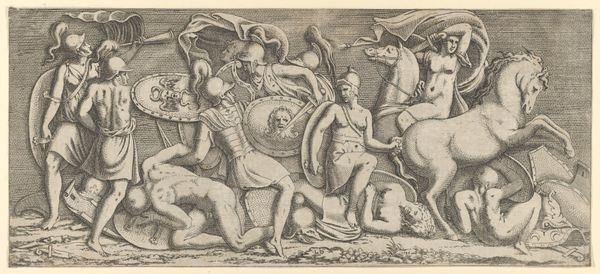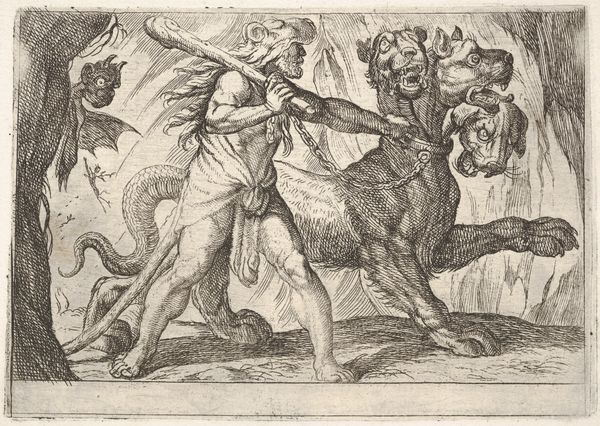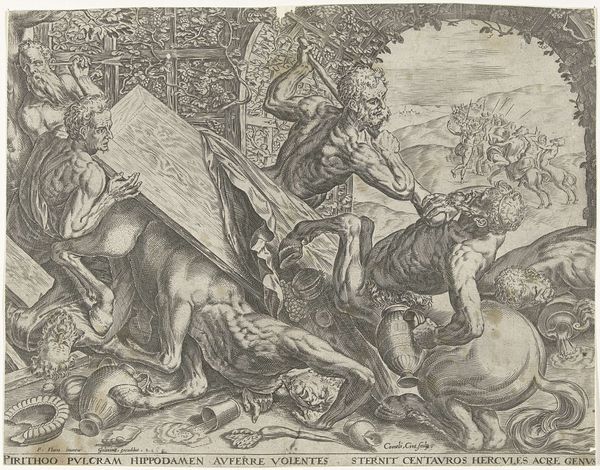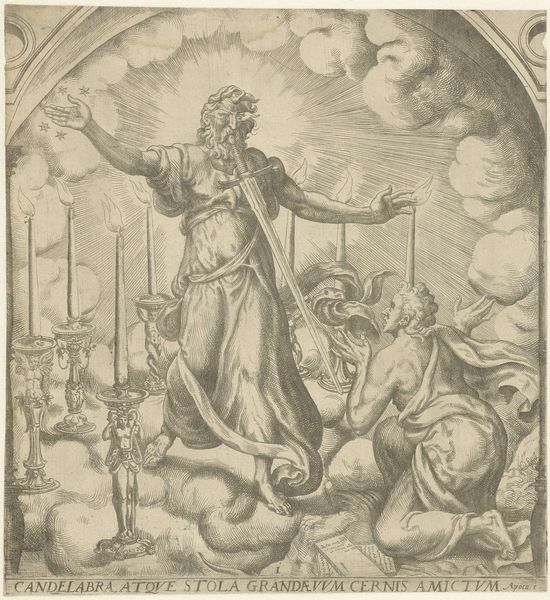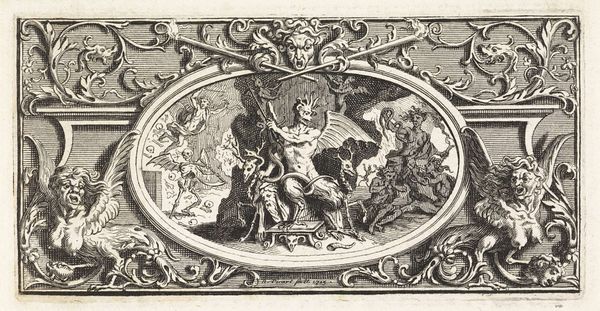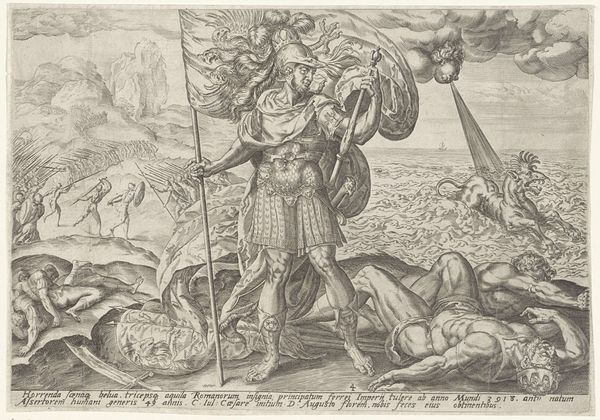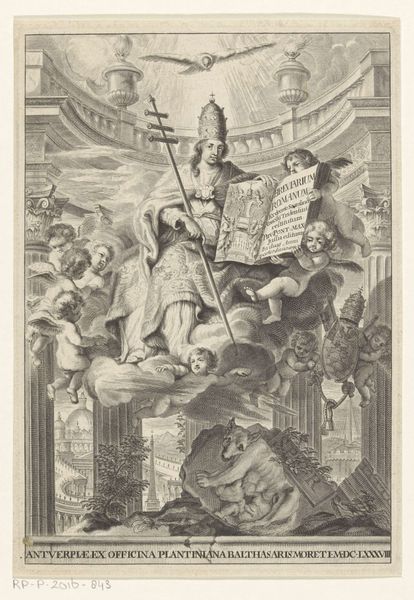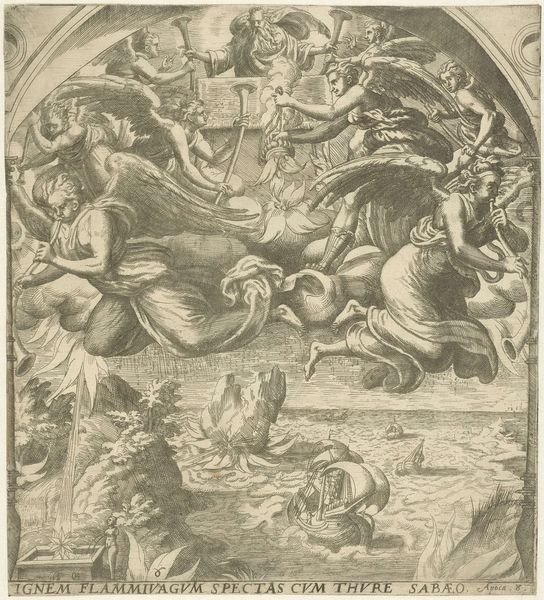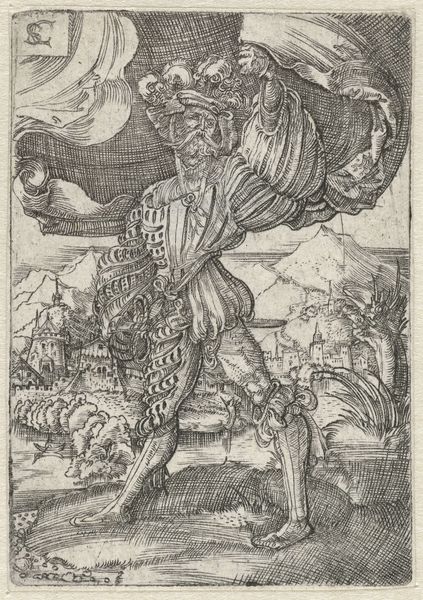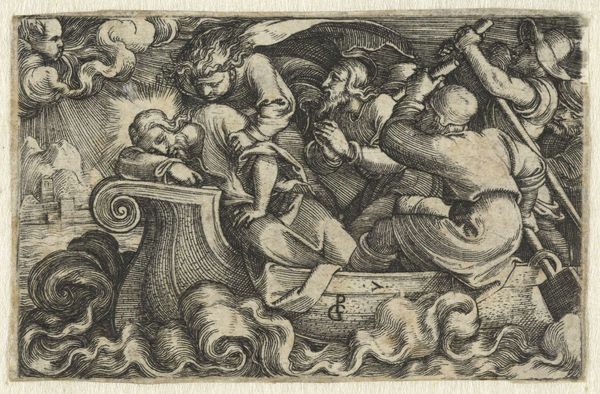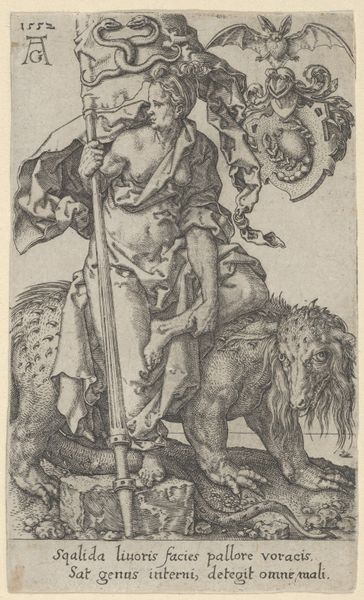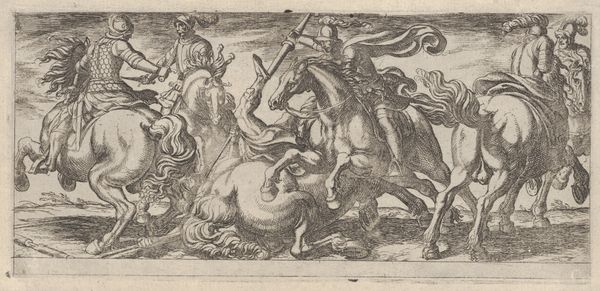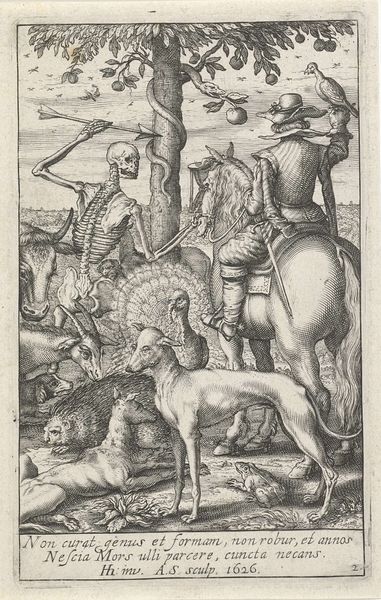
print, engraving
#
allegory
#
baroque
#
pen drawing
# print
#
figuration
#
line
#
history-painting
#
engraving
Dimensions: height 107 mm, width 133 mm
Copyright: Rijks Museum: Open Domain
Editor: Here we have Hendrik Pola’s engraving, "De Tijd jaagt op een soldaat," dating from around 1705-1713. The high contrast of the engraving and the dynamic scene make it seem very urgent. What do you make of it? Curator: It strikes me as a powerful meditation on mortality. Notice the figure of Time, armed with his scythe, juxtaposed with the soldier. It’s a common visual trope, this dance with death. The soldier's armor and weaponry symbolize earthly power, which ultimately crumbles before the inexorable march of time. Consider the skulls—what meaning do they hold in relation to these two figures? Editor: Well, they certainly emphasize death’s inevitability. The skulls appear both beneath Time, almost as his foundation, and lining the architecture like morbid decoration. Does this reflect a specific cultural understanding of death at the time? Curator: Precisely! This period wrestled with the ephemeral nature of life and earthly glory. The soldier, though active and seemingly in his prime, is still hemmed in by death on all sides. Do you see how the artist uses line to convey not just form, but also mood? Editor: Definitely. The frenetic, scratchy lines around Time add to the feeling of frantic energy. The stark, controlled lines of the soldier make him seem almost frozen in this conflict. Curator: Indeed. Pola uses established symbolic language to depict a deeper truth: the futility of resisting time's passage. It’s a reflection on vanity, *memento mori*, and the enduring power of visual symbols across time. We continue to wrestle with time's passage, much like this soldier. Editor: So, this engraving offers not just a historical image, but a timeless exploration of mortality. Curator: Absolutely. And in examining the past’s artistic reflections on such profound topics, perhaps we can better understand our own relationship with the future.
Comments
No comments
Be the first to comment and join the conversation on the ultimate creative platform.
